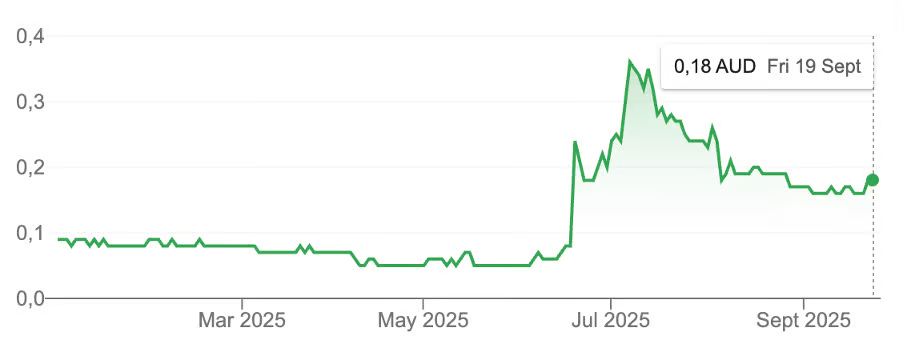Aussie unicorns
In Australia, most unicorns and decacorns are funded through the ASX. Companies like Xero ($25 billion), Wisetech ($40 billion), TechnologyOne ($10 billion), and of course Afterpay ($39 billion sale) used the ASX to reach unicorn status and beyond, all while offering daily liquidity to employees and early investors.

Which is an intriguing contrast to the venture-funded market, which placed ‘listing on the ASX’ near dead last as their expected exit outcome on the 2024 State of Australian Startup survey.
We think there are two reasons to reconsider:
Firstly, public listed companies raise money faster and easier than in private markets, in good times and bad. Often there are only days between a deal announcement and cash settlement.
Founders often view listing is an unwelcome distraction when times get tough, and of course a falling share price has a way of commanding attention. But in an emergency, listed companies can offer discounts to a long list of funds willing to back a company through a tight spot - at a price.
Private companies don’t have that option.
Most venture funds back winners only, regardless of their initial excitement and support. This can take management teams by surprise when an erstwhile close relationship with a venture fund fails to translate to follow-on capital.
Secondly, there’s an impression that companies are undervalued on the ASX, while US investors understand long term opportunities better - and price them accordingly.
But today, the reality is actually the opposite.
Companies on the ASX that reach a certain scale count amongst the most richly valued on the global market. Examples include Wisetech (44x EV/Sales), Pro Medicus (163x EV/Sales), TechnologyOne (53x EV/Sales) and Orthocell (60x EV/Sales).
These valuation premiums may reflect a temporary market regime. Or there may be a structural reason: Australia is a wealthy country, and there are constant inflows into equity funds with few ASX growth opportunities to choose from.
These valuation premiums when things go right, and the advantages of being listed when things go wrong, should be front of mind for founders considering options for their next raise.
PreIPO
In the leadup to 2021, investing at the preIPO stage was an easy winner. Funds invested in companies through convertible notes offering yield, seniority, and a discount to listing price, usually around 25%. A booming IPO market ensured that first day performance was often strong, so 50-100% day 1 returns post-listing were common.
But in a tale as old as finance, the success of this strategy led to new fund launches and more capital deployed, only for the IPO window to shut decisively, where it has remained for most private companies since.
PreIPO investors expecting a return of capital in 1 or 2 years have been stuck with investments made 2020-2021, in companies that were anticipating a near-term listing that didn’t eventuate.
This created immense pressure for the sector, with funds forced into tough decisions around allocating limited capital to portfolio companies in need, or looking for new opportunities. And for a fund, raising fresh capital for a preIPO strategy is a particularly tough sell right now.
As night follows day, this downturn created a buyers market, and funds who do have access to fresh capital have an extremely attractive opportunity set. Funds can dictate price and terms with much less competition.
If 2020-2021 was the worst time to invest in these strategies, today must count as one of the best. But the sector will only recover when the IPO market reopens in full.
Healthcare
Biotech fared worse than software in 2022. As with preIPO funds, generalist investors flooded the sector targeting ‘platform’ technologies that promised to revolutionize drug discovery, only for the market to have its worst downturn in living memory. A record number of healthcare companies traded below cash.
Many have since delivered drugs and produced exceptional returns, but most companies, and the biotech index itself, remains in a funk.
A good example is CRISPR and gene editing technologies - which worked, but proved expensive, unpopular, and disastrous for investors. There is an equivalent situation developing today in AI-focused drug discovery platforms, which have attracted a lot of attention in the AI boom, only for enormous cash burns and distant revenue prospects leading to poor returns.
Everyone is looking for an untapped AI opportunity, but perhaps the next Nvidia is Nvidia.
In Australia
Locally, there have been multiple billion-dollar successes in healthcare, but these have typically focused on a particular disease and were mostly funded by specialists, and mostly on the ASX.
To give some examples, Telix built an $8 billion company through the biotech downturn, and Neuren Pharmaceuticals brought a drug to market and is generating substantial revenues.
A number of other companies on the ASX reached unicorn status, like Clarity Pharmaceuticals and Opthea.
So there has been plenty of opportunity, but it takes a specialist focus, and the bulk of wealth creation has occurred in the listed market.
Venture Studio
Venture studios (like Ace) offer an interesting take on venture and software development. Profits from software development can derisk a venture investment, leading to 20% to +50% cash returns, with additional upside (and alignment) coming from the equity holding.
For startups, the advantages of using a studio rather than hiring in-house are:
- Access to world-class talent that would otherwise not join a firm,
- The ability to scale talent up and down across different areas at different stages of development, as no project ever goes completely to plan,
- Avoiding extended hiring cycles, rigid employment contracts, and difficult situations when it turns out the wrong person has been hired. This is easily fixed with a studio, but painful in a startup,
- Oversight from experienced developers and business managers, often with 20+ years experience.
An MVP can now be built for $50k-$100k in a sprint. This is enough for two founders to save, build, and test the market, and then (if required) raise the more substantial amounts for the hardest part: winning customers and revenues.
The founding stage of a company will always be the most exciting part of commerce, and will continue to attract immensely talented, ambitious people.
Summary
In the decade leading up to 2021, waves of capital flowed through the market, pushing most companies up and down together. That broad-based regime is over. With interest rates high, consumers pressed on all sides, and private funds still working through investments made in the challenged 2020-2021 vintages, it may be some time before a similar wave of enthusiasm lifts all asset prices.
Listed markets have fared better, and for all the excitement around the small number of VC winners, the ASX has supported a number of companies into unicorn and decacorn status, while offering a capital lifeline to many companies that would have otherwise failed in 2022-2023.
For investors and entrepreneurs, the opportunity set today is rich. But one thing’s for sure: success requires substantially more work and less reliance on luck than ever.
If you'd like to invest with us, you can access our investment portal and fund documentation through the button above.
If you’d like to speak to us about opportunities with our venture studio reach out using the link below.



